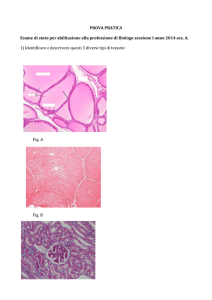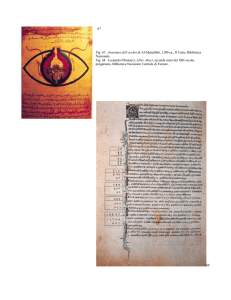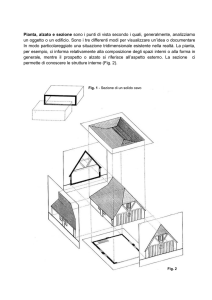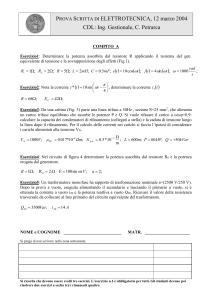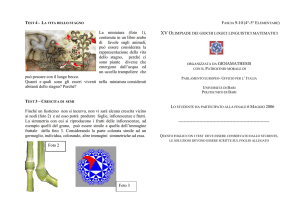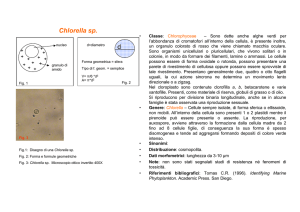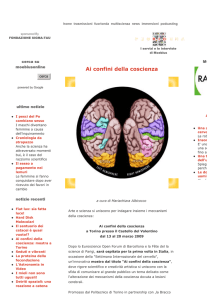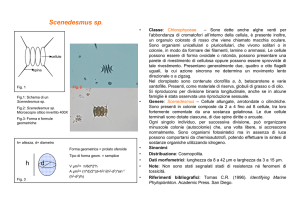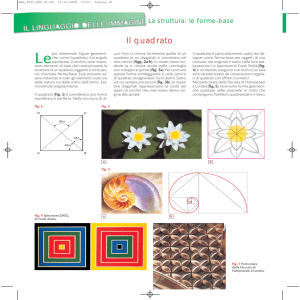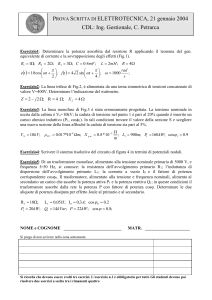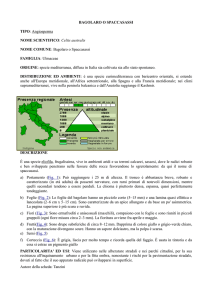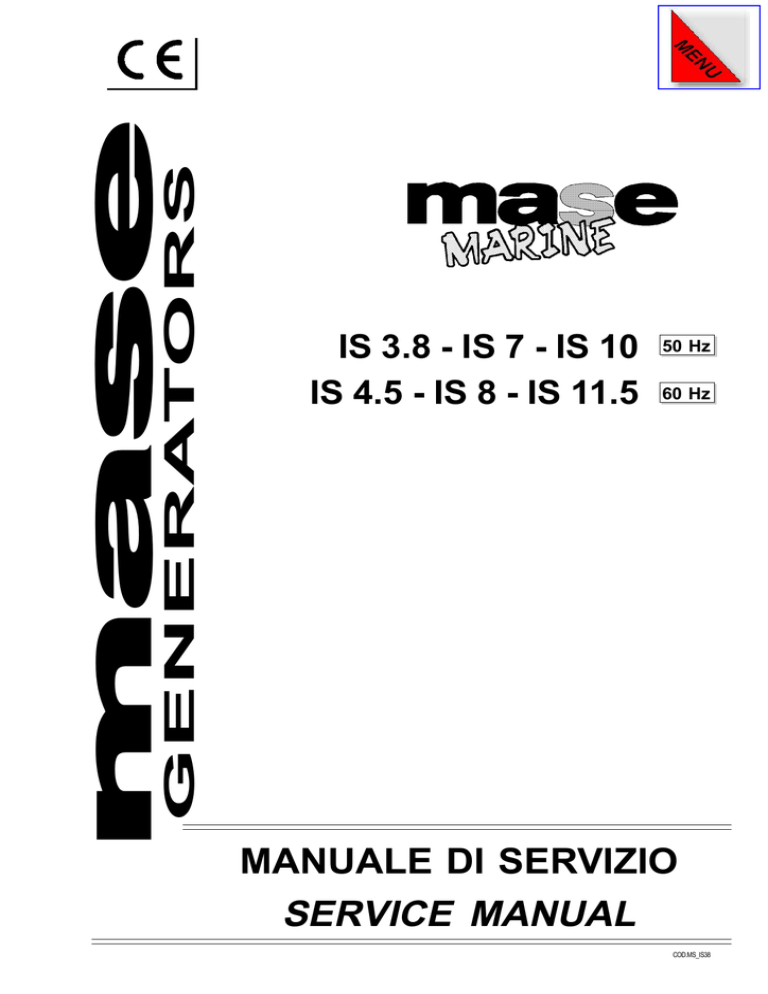
mase
GENERATORS
IS 3.8 - IS 7 - IS 10
IS 4.5 - IS 8 - IS 11.5
50 Hz
60 Hz
MANUALE DI SERVIZIO
SERVICE MANUAL
COD.MS_IS38
INDEX
INDICE
1.0
Caratteristiche tecniche
1.0
Technical features
1.1
1.1
IDENTIFICATION OF GENERATOR
GENERATOR SERIAL NUMBER
ENGINE SERIAL NUMBER
1.2
IDENTIFICAZIONE DEL GENERATORE
NUMERO DI MATRICOLA DEL
GENERATORE
NUMERO DI MATRICOLA DEL MOTORE
IDENTIFICAZIONE DEI COMPONENTI
1.2
IDENTIFICATION OF COMPONENTS
2.0
Principio di funzionamento e
2.0
Power generation principle
and A.V.R.
regolazione elettronica della
tensione
3.0
Manutenzione
3.0
Maintenance
3.1
3.2
GENERALITÀ
TABELLA DI MANUTENZIONE
3.1
3.2
NOTES ON SERVICE
PERIODIC SERVICE GUIDE
4.0
Controlli
4.0
Service
4.1
CONTROLLI CHE POSSONO ESSERE
ESEGUITI SENZA SMONTARE
L'ALTERNATORE
4.1
INSPECTIONS POSSIBLE WITHOUT
HAVING TO DISMOUNT THE
ALTERNATOR, DIRECTLY ON THE
BRANCH BOX
4.1.1
4.1.2
4.1.3
4.1.3.1
4.1.4
4.1.5
4.1.5.1
4.1.5.2
4.1.5.3
Avvolgimento di eccitazione
Avvolgimento di potenza
Avvolgimento di carica batteria
Fusibile carica batteria più fusibile cablaggio
Interruttoretermico
Scheda comandi
Fusibile
Relay
Diodi
4.1.1
4.1.2
4.1.3
4.1.3.1
4.1.4
4.1.5
4.1.5.1
4.1.45.2
4.1.5.3
Excitation winding
Power winding
Battery charger winding
Battery charger fuse and wiring fuse
Thermal switch
Control board
Fuse
Relay
Diodes
4.2
ROTORE
4.2
ROTOR
4.2.1
Avvolgimento di rotore
4.2.1
Rotor winding
4.3
4.3
4.4
SMONTAGGIO/MONTAGGIO
ALTERNATORE
CRUSCOTTO COMANDI
4.4
ALTERNATOR
DISMOUNTING/MOUNTING
CONTROL PANEL
4.4.1
4.4.2
Circuito stampato
Comando distanza
4.4.1
4.4.2
Printed circuit
Remote control panel
4.5
ALTRI PARTICOLARI
4.5
OTHER COMPONENTS
4.5.1
4.5.1.1
4.5.1.2
4.5.2
4.5.2.1
4.5.3
4.5.4
4.5.5
4.5.6
4.5.7
Scambiatore di calore (acqua/aria)
Fascio tubiero
Anodi di zinco
Controlli su altri particolari
Elettromagnete - Stop IS 3.8-4.5
Elettrovalvola
Regolazione dei giri
Termostato acqua
Pressostato olio
Motorino avviamento
4.5.1
4.5.1.1
4.5.1.2
4.5.2
4.5.2.1
4.5.3
4.5.4
4.5.5
4.5.6
4.5.7
Heat exchanger (water/air)
Tube nest
Zinc anodes
Other components
Fuel - Solenoid IS 3.8-4.5
Stop solenoid
Engine speed adjustement
Water temperature switch
Oil pressure switch
Starter
5.0
Tabella guasti
5.0
Trouble shoooting
6.0
Schema elettrico macchina
6.0
Machine wiring diagram
6.1
SCHEMA ELETTRICO DI
COLLEGAMENTO PANNELLO
6.1
CONTROL PANEL WIRING DIAGRAM
AND CONNECTION
3,8
60 HZ.
7
6500
550 mm.
560 mm.
132
Larghezza - Width
Altezza - Height
Peso - Weight
Kg.
770 mm.
Lunghezza - Lenght
DIMENSIONI - DIMENSIONS
8
190
kg.
630 mm.
550 mm.
950 mm.
F
4000
Classe isolamento - Insulation class
3500
7000
1
W
Potenza continuativa - Cont. power
4500
Fattore di potenza otenza - Power factor
W
Potenza max. - Max. power
3800
50 HZ.
60 HZ.
10
7300
8000
9200
10000
3
230
kg.
630 mm.
550 mm.
1060 mm.
10000
11500
60 HZ.
3600
20 (14,7)
22 (16,2)
11,5
3,4 (0,9)
2,1 (2,6)
50 HZ.
Synchronous - single phase - self exciting with A.V.R.
4,5
Type
50 HZ.
Sincrono - monofase - autoeccitato con regolatore elettronico
IS
3000
17,0 (12,5)
18,5 (13,6)
954 (18,47)
3 G MF - 42
Tipo
Modello - Model
ALTERNATORE - ALTERNATOR
0,8 (0,2)
L. (U.S.G.)
Capacità vaso espansione - Recovery tank capacity
1,6 (2)
2,9 (0,76)
1 (1,3)
3600
13,0 (9,60)
14,5 (10,6)
Capacità scambiatore calore - Heatexchanger capacity L. (U.S.G.)
Capacità olio basamento - Oil sump capacity
2
1
3000
11 (8,1)
12 (8,8)
Numero cilindri - Number of cylinders
3600
7,0 (5,1)
7,8 (5,7)
636 (12,31)
72 (2,83)
75 (2,95)
2 GM FL - 42
23/1
3000
6,0 (4,4)
6,5 (4,8)
318 (6,15)
1 GM 10 L - G2
Rapporto compress. - Compress. ratio
KG (LT.)
HP (KW)
Potenza - Power NA (DIN 6270)
Giri - R.P.M.
HP (KW)
Potenza - Power NB (DIN 6270)
CC. (CU. inch.)
MM. (inch)
Corsa - Stroke
Cilindrata - Displacement
MM. (inch)
YANMAR
Alesaggio - Bore
Tipo - Type
MOTORE - ENGINE
1.0 Caratteristic
he tecnic
he - Tec
hnical ffeatures
eatures
Caratteristiche
tecniche
echnical
1.1 IDENTIFICAZIONE DEL
GENERATORE
1.1 IDENTIFICATION OF GENERATOR
IS 3.8/4.5
IS 7/8-10/11.5
Fig. 1
IS 3.8/4.5
Fig. 1a
IS 7/8-10/11.5
Fig. 2
Il numero di matricola del generatore è riportato
su di un adesivo, posto sulla parte inferiore della
cassa (Fig. 1/1a).
Qualora non sia possibile identificare il generatore da questo numero, si faccia riferimento al
numero di matricola del motore, punzonato sulla
targhetta (Fig. 2/2a).
Fig. 2a
Each generator has got an identification number
indicated on a sticker on the lower front side of the
sound shield (Fig. 1/1a).
In case identification trough this number becomes
impossibile, please refer to the engine number,
marked on the label (Fig. 2/2a).
1.2 IDENTIFICAZIONE DEI COMPONENTI
1.2 IDENTIFICATION OF COMPONENTS
IS 3.8/4.5
IS 3.8/4.5
5
1
6
4
18
17
13
15
16
7
9
11
21
8
20
2
19
10
12
14
3
Fig. 3
Fig. 4
Elementi della macchina (Fig. 3-4)
Generator components (Fig. 3-4)
1)
2)
3)
4)
5)
6)
7)
8)
9)
10)
11)
12)
13)
14)
15)
16)
17)
18)
19)
20)
21)
1)
2)
3)
4)
5)
6)
7)
8)
9)
10)
11)
12)
13)
14)
15)
16)
17)
18)
19)
20)
21)
Motore
Alternatore
Scatola di derivazione
Filtro gasolio
Interruttore alta temperatura acqua
Filtro aria
Valvola termostatica
Rubinetti scarico acqua
Elettromagnete di arresto
Pompa combustibile
Pompa acqua
Pressostato olio
Pastiglie di zinco
Ingresso combustibile
Ritorno combustibile
Ingresso acqua
Morsetti batteria
Scambiatore acqua/aria
Presa aria
Passacavi
Raccordo scarico
Engine
Alternator
Junction box
Fuel filter
High water temperature switch
Air filter
Thermostatic valve
Water discharge tap
Safety stop electromagnet
Fuel pump
Water pump
Oil pressure switch
Zinc anodes
Fuel feed
Fuel return
Water inlet
Battery connections
Water/air heat exchanger
Air inlet
Cables guide
Exhaust fitting
IS 7/8-10/11.5
IS 7/8-10/11.5
1
17
6
22
19
8
18
7
5
4
9
23
10
16
12
3
2
21
20
15
11
14
13
Fig. 5
Fig. 6
Elementi della macchina (Fig. 5-6)
Generator components (Fig. 5-6)
1)
2)
3)
4)
5)
6)
7)
8)
9)
10)
11)
12)
13)
14)
15)
16)
17)
18)
19)
20)
21)
22)
23)
1)
2)
3)
4)
5)
6)
7)
8)
9)
10)
11)
12)
13)
14)
15)
16)
17)
18)
19)
20)
21)
22)
23)
Motore
Alternatore
Scatola di derivazione
Filtro gasolio
Interruttore alta temperatura acqua
Filtro aria
Valvola termostatica
Scambiatore calore
Rubinetti scarico liquido refrigerante
Elettrovalvola di arresto
Leva arresto manuale
Pompa combustibile
Pompa acqua
Pressostato olio
Pastiglie di zinco
Ingresso combustibile
Ritorno combustibile
Ingresso acqua
Collegamenti batteria
Presa aria
Passacavi
Scambiatore acqua/aria
Raccordo scarico
Engine
Alternator
Junction
Fuel filter
High water temperature switch
Air filter
Thermostatic valve
Heat exchanger
Coolant discharge tap
Fuel solenoid
Manual stop lever
Fuel pump
Water pump
Oil pressure switch
Zinc anodes
Fuel feed
Fuel return
Water feed
Battery connections
Air inlet
Cables guide
Water/air heat exchanger
Exhaust fitting
3
4
5
1
2
Relay board (Fig. 7)
Scheda relè (Fig. 7)
1)
2)
3)
4)
5)
Fig. 7
Morsettiera cruscotto comandi
Scheda relè
Fusibile carica batteria (30 A)
Fusibile (30 A)
Fusibile protezione scheda (1 A)
1)
2)
3)
4)
5)
Control panel terminal board
Relay board
Battery charger fuse (30 A)
Fuse (30 A)
Relay board fuse (1 A)
3
5
4
1
2
Fig. 8
Collegamenti (Fig. 8)
1)
2)
3)
4)
5)
Morsettiera di potenza
Regolatore ricarica batteria
Regolatore di tensione
Portaspazzole
Morsettiera regolatore di tensione
Connection (Fig. 8)
1)
2)
3)
4)
5)
Power terminal board
Battery charger regulator
A.V.R.
Brush holder
A.V.R. terminal board
CRUSCOTTO COMANDI
CONTROL PANEL
11
6
7
8
10
2
1
9
3
4
5
Fig. 9
1)
2)
3)
4)
5)
6)
7)
8)
9)
10)
11)
Contaore
Connettore allacciamento comando distanza
Pulsante «ON»
Pulsante «START»
Pulsante «OFF»
Spia pressione olio
Spia temperatura acqua
Spia sovraccarico/sovratemperatura
Spia alimentazione cruscotto
Spia generatore
Circuito stampato
1)
2)
3)
4)
5)
6)
7)
8)
9)
10)
11)
Hoursmeter
Remote control panel connector
«ON» push-button
«START» push-button
«OFF» push-button
Oil pressure lamp
Water temperature lamp
Overload/overtemperature lamp
Control panel lamp
Generator lamp
Printed circuit
PANNELLLO A DISTANZA
REMOTE CONTROL PANEL
5
4
6
3
2
1
Fig. 10
Comando a distanza (Fig. 10)
1)
2)
3)
4)
5)
6)
Pulsante «ON»
Pulsante «START»
Pulsante «OFF»
Spia allarme generale
Spia alimentazione comando
Spia funzionamento generatore
IMPORTANTE
L’allacciamento del cruscotto comandi a distanza esclude automaticamente i comandi avviamento e arresto dal cruscotto comandi principale.
Remote control panel (Fig. 10)
1)
2)
3)
4)
5)
«ON» push-button
«START» push-button
«OFF» push-button
General warning lamp
Remote control panel lamp
WARNING
When the remote control panel is connected,
automatically the start and stop functions on
the main control panel are cutted out.
2.0 Principio di funzionamento
e regolazione elettronica
della tensione
2.0 Power generation principle
and A.V
.R.
A.V.R.
1
Fig. 11
I generatori della serie I.S. sono dotati di alternatori, sincroni, a due poli, con regolazione elettronica.
Lo statore (Fig. 11, Rif. 2) alimenta il regolatore
elettronico (Fig. 11, Rif. 3) tramite un avvolgimento
di eccitazione separato (Fig. 11, Rif. 4).
Il regolatore elettronico provvede ad alimentare il
rotore (Fig. 11, Rif. 1) attraverso le spazzole (Fig.
11, Rif. 5) inviando una corrente continua variabile in funzione del carico per mantenere costante
la tensione in uscita.
La tensione di uscita è regolabile agendo sul
potenziometro (Fig. 12, Rif. 1) del regolatore elettronico.
Fig. 12
IS series generators are equipped with two pole
synchronous alternators with electronic regulation.
The stator (Fig. 11, Ref. 2) powers the electronic
regulator (Fig. 11, Ref. 3) by means of a separate
exciter winding (Fig. 11, Ref. 4).
The electronic regulator poloers the rotor (Fig. 11,
Ref. 1) by means of the brushes (Fig. 11, Ref. 5),
sending them a direct current varying in relation with
the load in order to maintain the output voltage
constant.
The output voltage is adjustable turning the
potentiometer (Fig. 12, Ref. 1) on the AVR board.
3.0 Manutenzione
3.0 Maintenance
3.1
3.1 NOTES ON SERVICE
GENERALITÀ
Per la durata ed il corretto funzionamento del
generatore è necessario rispettare il programma
di controlli e manutenzione indicati nella tabella
seguente.
L’esecuzione di queste operazioni è descritta, per
la parte relativa al motore, sul libretto uso e
manutenzione o sul manuale d’officina del
costruttore del motore.
For the longevity and correct performance of the
generator, it is necessary to respect the check and
maintenance program detailed out in the following
tables.
Concerning the engine, the maintenance operations
are described in the use and maintenance manual
and the workshop manual prepared by the engine
manufacturer.
Si ricorda inoltre che durante le normali operazioni di manutenzione (montaggio/smontaggio) è necessario rispettare alcune regole generali quindi:
- rispettare le coppie di serraggio indicate
- utilizzare grassi, olii, frenafiletti appropriati
- non lavare avvolgimenti o parti elettriche con
acidi o sostanze corrosive
- spruzzare disossidanti sui contatti elettrici
- rispettare la numerazione dei cavi.
Se necessario annotarne la numerazione e la
posizione.
Please note furthermore that during maintenance
operations of the alternator (dismounting/
mounting) following general rules must be respected:
- follows the torque specifications ;
- use appropriate oil, grease and bonding agents
- do not clean windings or electrical parts with acid
or other corrosive substances ;
- spray deoxidizer on the electrical connections
- respect the numerical order of wires.
If necessary, note down numeration and position.
3.2 TABELLA DI MANUTENZIONE
3.2 PERIODIC SERVICE GUIDE
IS 3.8/7/10
MANUTENZIONE
MAINTENANCE
PERIODICITÀ ORE
HOURS
8
50 150 200 300 600 1500 3000
CONTROLLO
CHECK
INIETTORI
INJECTORS
LIVELLO OLIO MOTORE
KRANKCASE OIL LEVEL
LIVELLO LIQUIDO BATTERIA
BATTERY WATER LEVEL
BOCCOLAROTORE
ROTOR BUSHING
VALVOLATERMOSTATICA
TERMOSTAT
ANODI DI ZINCO
ZINC ANODES
TENSIONE CINGHIA 7/10
BELT TENSION 7/10
GIOCOVALVOLE
ROCKER AARMS CLEARANCE
•
•
•
•
•
•
•
•
REVISIONE
OVERHAUL
SOSTITUZIONE
REPLACEMENT
SERRAGGIO RACC. MANDATA CONB. TIGHTEN FUEL DELIVERY UNION
OLIO CARTER
CRANKCASE OIL
FILTRO OLIO
OIL FILTER
FILTRO COMBUSTIBILE
FUEL FILTER
CINGHIA
BELT
PARZIALE
PARTIAL
GENERALE
TOTAL
•
•
•
•
•
•
•
4.0 Controlli
4.0 Service
Tutte le misure di resistenza si intendono eseguite ad
alternatore freddo, temperatura ambiente 10 “ 30 °C e
con strumentazione tale da permettere la lettura
dei valori indicati.
La tolleranza rispetto ai valori riportati è indicativamente ± 10%.
Letture più approssimative, eseguite con strumenti di portata non adeguata, possono unicamente indicare la continuità dell’avvolgimento ma
non danno indicazioni su eventuali corto circuiti.
Alla the resistances must be measured when the alternator is
cold, ambient temperature between 10 '' 30°C and with an
instrument board that permits reading of the given
values.
The tolerance against the reported values is around
± 10%.
Readings taken with simpler instruments can only
indicate the continuity of the winding but cannot
indicate presence of shorted circuits.
N.B.
Oltre alle possibilità di guasto che sono indicate in seguito, si può presentare il caso di uno o
più avvolgimenti a massa. Si consiglia quindi di
controllare questa eventualità verificando con
un tester che non ci sia continuità fra le estremità dei vari avvolgimenti (identificati nei paragrafi successivi) e massa.
N.B.
Apart from the possibilities suggested here-by,
one or more windings could also be grounded
causing a failure.
We suggest therefore to check by means of a
tester that there is no continuity between the
extremities of the windings and ground.
1
2
2
1
Fig. 13a
Fig. 13
4.1 CONTROLLI CHE POSSONO
ESSERE ESEGUITI SENZA
SMONTARE L’ALTERNATORE.
4.1 INSPECTIONS WITHOUT
DISMANTLING THE ALTERNATOR.
Operazioni preliminari
Preliminary operations
- Togliere le viti (Fig. 13/13a, Rif. 1)
- Rimuovere il coperchio (Fig. 13/13a, Rif. 2)
- Remove the screw (Fig. 13 /13a, Ref. 1)
- Remove the cover (Fig. 13/13a, Ref. 2)
4.1.1 Avvolgimento di eccitazione
4.1.1 Excitation winding
Caratteristiche
Characteristics:
IS 3.8
IS 4.5
50 HZ.
60 HZ.
3.34 Ω
3.72 Ω
IS 7
IS 8
50 HZ.
60 HZ.
2.80 Ω
3.10 Ω
IS 10
IS 11.5
50 HZ.
60 HZ.
3.80 Ω
3.20 Ω
4
3
Fig. 14
Metodo di controllo:
Testing method:
- Scollegare dalla morsettiera (morsetti 3-4) i due
cavi rigidi provenienti dallo statore (Fig. 14).
- Disconnect from the terminal strip (terminals 3
and 4) the two rigid wires coming from the stator
(Fig. 14).
- Verify that the resistance values between these
two wire terminals are within the limits as reported
in the above table.
- Verificare che la resistenza fra le estremità di
questi due cavi rientri nei valori indicati in tabella.
REMEDY: Replace the stator.
RIMEDIO: Sostituire lo statore.
4.1.2 Avvolgimento di potenza
4.1.2 Power winding
Caratteristiche
Characteristics:
IS 3.8
IS 4.5
50 HZ.
60 HZ.
P1 - F1 = P2 - F2
P1 - F1 = P2 - F2
0.51 Ω
0.38 Ω
IS 7
IS 8
50 HZ.
60 HZ.
P1 - F1 = P2 - F2
P1 - F1 = P2 - F2
0.15 Ω
0.12 Ω
IS 10
IS 11.5
50 HZ.
60 HZ.
P1 - F1 = P2 - F2
P1 - F1 = P2 - F2
0.16 Ω
0.13 Ω
Fig. 15
Metodo di controllo:
Testing method:
- Scollegare dalla morsettiera i cavi di potenza
provenienti dallo statore contrassegnati dalle
lettere P1 F1 P2 F2 (Fig. 15).
- Verificare che la resistenza fra le estremità di
entrambi le coppie di cavi P1 F1 e P2 F2 rientri
nei valori indicati in tabella.
- Disconnect from the terminal board, the wires
coming from stator marked by the letters P1 F1 P2
F2 (Fig. 15).
- Verify that the resistance values between the two
pairs of wire terminals P1 F1 and P2 F2 are within
the limits as reported in the above table.
N.B.
La resistenza totale dell’avvolgimento (nel collegamento 220V o 240V) si misura ponticellando
F1 e P2. La misura effettuata fra i punti P1 F2
sarà il doppio del valore indicato in tabella.
N.B.
The total resistance value of power winding (220/
240V) is measured connecting F1 an P2. The
resistance value measured between P1 and F2 is
double of that indicated in the table above.
RIMEDIO: Sostituire lo statore.
REMEDY
REMEDY:: Replace the stator.
4.1.3 Avvolgimento di carica batteria
(Statore)
4.1.3 Battery charger winding
(Stator)
Caratteristiche:
Characteristics:
IS 3.8
IS 4.5
50 HZ.
60 HZ.
0.055 Ω
0.043 Ω
13V
IS 7
IS 8
50 HZ.
60 HZ.
0.042 Ω
0.033 Ω
13V
IS 10
IS 11.5
50 HZ.
60 HZ.
0.037 Ω
0.029 Ω
13V
~
R
~
Fig. 16
Metodo di controllo
Testing method:
- Scollegare il connettore ed il cavo ROSSO che
va al fusibile (Fig. 16)
- Verificare che la resistenza fra il cavo VERDE
e rispettivamente i due cavi RIGIDI (terminali
G) rientri nei valori indicati.
IN ALTERNATIVA
- Verificare che fra il caso VERDE e rispettivamente i cavi RIGIDI la tensione alternata rientri
nei valori indicati in tabella.
- Disconnect the connector and the wire (color:
RED) going to the fuse (Fig. 16).
- Verify that the resistance values between the
GREEN wire and the RIGID wires (terminals G)
are within the limits indicated in the table above.
AS AN ALTERNATIVE
- Verify that the voltage between the GREEN wire
and the RIGID wire is as reported above.
N.B.
Eseguire questa misura senza carichi applicati
al generatore con batteria d’avviamento inserita e dopo aver atteso per qualche minuto
dall’avviamento.
N.B.
The above measurements must be done after
few minutes from starting without any load applied
to the generator and with the starting battery
connected.
RIMEDIO: Sostituire lo statore.
IMPORTANTE
Il circuito del carica batteria è dotato di un
regolatore elettronico di carica in grado di erogare max. 15 A a 12V in caso di anomalia nella
ricarica della batteria dopo aver controllato la
resistenza dell’avvolgimento ed il fusibile si
consiglia di sostituire il regolatore.
Remedy: Replace the stator.
WARNING
The battery charger circuit, equipped with an
electronic charger regulator, has a max. output of
15 A at 12 V. If the defect on the battery charger
circuit results is not defending on the fuse or on
the stator windings, it’s advisable to replace the
regulator.
4.1.3.1
Fusibile carica batteria più
fusibile cablaggio
50 HZ.
60 HZ.
Battery charger fuse and wiring
fuse
Characteristics:
Caratteristiche:
IS 3.8/7/10
4.1.3.1
30 A
30 A
IS 3.8/7/10
50 HZ.
60 HZ.
30 A
30 A
1
2
Fig. 17
Metodo di controllo:
Testing method::
- Verificare la continuità alle estremità del fusibile
(Fig. 17).
- Verify the continuity at its terminals (Fig. 17).
RIMEDIO: Sostituire il fusibile.
REMEDY: Replace the fuse.
4.1.4 Interruttore termico (Statore)
4.1.4 Thermal switch (Stator)
Caratteristiche:
Characteristics:
Normalmente chiuso. Temperatura d’intervento
160 °C.
Normally closed. Trips at a temperature of 160 °C.
16
17
Fig. 18
Metodo di controllo:
Testing method:
- Scollegare dalla morsettiera i due cavi (NERI)
provenienti dallo statore ai morsetti N. 16 e
N. 17 (Fig. 18)
- Verificare la continuità fra le due estremità dei
cavi.
- Disconnect from the terminal board, the two wires
(color: BLACK) connecting terminals No. 16 and
No. 17 (Fig. 18) to the stator.
- Check the continuity between the ends of the
wires
RIMEDIO: Sostituire lo statore.
REMEDY: Replace the stator.
N.B.
L’interruttore termico può intervenire per sovraccarico o per sovratemperatura.
Verificare quindi, se è necessario, i carichi
applicati e la temperatura d’esercizio del generatore, con particolare attenzione alla sua installazione.
N.B.
The thermal switch can trip due to of overloading
or overheating. It's important to verify the total
electric load, the working temperature of the
generator and its installation.
4.1.5 Control board (Fig. 19)
4.1.5 Scheda comandi (Fig. 19)
1
3
2
4
Fig. 19
1)
2)
3)
4)
Fusibile «1A»
Relay elettrovalvola/ elettromagnete
Relay avviamento
Diodi
4.1.5.1
Fuse
Characteristics:
Caratteristiche:
50 HZ.
60 HZ.
Fuse «1A»
Fuel solenoid relay / electromagnet
Starting relay
Diodes
4.1.5.1
Fusibile
IS 3.8/7.10
1)
2)
3)
4)
1A
IS 3.8/7.10
50 HZ.
60 HZ.
1A
Metodo di controllo:
Testing method:
- Verificare la continuità alle estremità del fusibile
(Fig. 19).
- Verify the continuity at its terminals (Fig.19).
RIMEDIO: Sostituire il fusibile.
REMEDY: Replace the fuse.
4.1.5.2
4.1.5.2 Relay
Relay
Characteristics: 12V 30A
Caratteristiche: 12V 30A
30 - 87 Contatto normalmente APERTO
30 - 87 Contact normally OPEN
30 - 87b Contatto normalmente CHIUSO
30 - 87b Contact normally CLOSED
87B
87
85
30
86
Fig. 20
Metodo di controllo:
Testing method:
- Disinserire il relay
- Verificare che fra i punti 86-85 vi sia continuità
(Fig. 20).
- Verificare che eccitando la bobina (12V ai
morsetti 86-85) il contatto 30-87 CHIUDE e il
contatto 30-87b APRE.
- Remove the relay.
- Verify that there is continuity between 86 and 85
(Fig. 20).
- Verify that after exciting the coil (apply 12V to
terminals 86 and 85) contact 30-87 is CLOSED
and contact 30-87b is OPEN.
RIMEDIO: Sostituire il relay.
REMEDY: Replace the relay.
4.1.5.3
4.1.5.3
Diodi
Caratteristiche: 1A 1000V
Direzione normale
Direzione inversa
0,850 Ω
Mancanza di continuità
Diodes
Characteristics: 1A 1000V
Normal Direction
Reverse Direction
Fig. 21
0,850 Ω
NO continuity
Metodo di controllo:
Testing method:
- Scollegare i cavi del diodo (dissaldare)
- Verificare che la resistenza fra le due estremità
rientri nei valori indicati in tabella.
- Verificare che invertendo i puntali del tester non
ci sia più continuità.
- Disconnect the diode.
- Verify that the resistance value between its
terminals is as reported in the above table.
- Invert the tester terminals and verify that there is
no continuity.
RIMEDIO: Sostituire il diodo.
REMEDY: Replace the diode.
4.2 ROTORE
4.2 ROTORE
2
1
Fig. 22
Operazioni:
Operations:
- Rimuovere il coperchietto (Fig. 22, Rif. 2) dopo
aver tolto le viti ( fig. 22 rif. 1).
- Remove the screws (Fig. 22, Ref.1) and the
cover ( fig. 22 rif. 2).
4.2.1 Avvolgimento di rotore
4.2.1 Rotor winding
IS 3.8
IS 4.5
50 HZ.
60 HZ.
41.2 Ω
41.2 Ω
IS 7
IS 8
50 HZ.
60 HZ.
54.0 Ω
54.0 Ω
IS 10
IS 11.5
50 HZ.
60 HZ.
60.3 Ω
60.3 Ω
–
+
Fig. 23
Caratteristiche:
Characteristics:
Metodo di controllo:
Testing Method:
- Scollegare un cavo del portaspazzole e
misurare la resistenza fra «+» e «–».
- Verificare che la resistenza fra le due estremità
rientri nei valori indicati (Fig. 23).
- Disconnect the brush holder wire and measure
the resistance value between «+» and «–».
- Verify that the resistance value between the wire
terminals is as reported in the above table
(Fig. 23).
RIMEDIO: Sostituire il rotore.
REMEDY: Replace the rotor.
IMPORTANTE
La mancanza di tensione in uscita può essere
causata eccezionalmente dalla mancanza o
insufficienza di magnetismo residuo del rotore.
4.3 SMONTAGGIO/ MONTAGGIO
ALTERNATORE
WARNING
If there is still no power output, it could depend,
very rarely, on a lack of residual magnetism on
the rotor.
4.3 ALTERNATOR
DISMOUNTING/MOUNTING
2
1
4
3
5
Fig. 24
Operazioni preliminari
Preliminary operations
- Scollegare dallo scambiatore i tubi acqua
(Fig. 24, Rif. 1)
- Togliere il coperchio in plastica (Fig. 24, Rif. 4).
- Togliere le viti di fissaggio (Fig. 24, Rif. 3)
rimuovere lo scambiatore (Fig. 24, Rif. 2)
- Scollegare i cavi dell’alternatore
(Fig. 24, Rif. 5).
- Disconnect the water hoses from the heat
exchanger (Fig. 24, Ref. 1).
- Remove the plastic cover (Fig. 24, Ref. 4).
- Remove the screws (Fig. 24, Ref. 3) and the heat
exchanger (Fig. 24, Ref. 2).
- Disconnect the cables from the terminal board
(Fig. 24, Ref. 2).
- Disconnect the alternator cables (Fig. 24, Ref. 5).
4
1
2
3
Fig. 25
Sostituzione dello statore
Removal of the stator
- Eseguire le operazioni descritte in precedenza.
- Smontare il portaspazzole (Fig. 25, Rif. 4).
- Svitare i dadi (Fig. 25, Rif. 1) e togliere il
coperchio alternatore lato cuscinetto
(Fig. 25, Rif. 2).
- Estrarre lo statore (Fig. 25, Rif. 3).
- Carry out the preliminary operations.
- Remove the brush holder (Fig. 25, Ref. 4).
- Remove the nuts (Fig. 25, Ref. 1) and the cover
(Fig. 25, Ref. 2) on the bearing side.
- Remove the stator (Fig. 25, Ref. 3).
3
4
2
1
Fig. 26
Sostituzione del rotore
Removal of the rotor
- Eseguire le operazioni descritte in precedenza.
- Togliere le viti (Fig. 26, Rif. 1) e rimuovere il
coperchio alternatore lato motore
(Fig. 26, Rif. 2)
- Togliere le viti (Fig. 26, Rif. 3) e rimuovere il
rotore (Fig. 26, Rif. 4).
- Carry out the preliminary operations.
- Remove the screws (Fig. 26, Ref. 1) and the
alternator cover (Fig. 26, Ref. 2) on the engine
side.
- Remove the screws (Fig. 26, Ref. 3) and the rotor
(Fig. 26, Ref. 4).
MONTAGGIO
MOUNTING
Eseguire le varie operazioni di rimontaggio nell’ordine inverso riportato a quanto descritto in precedenza.
Remount the alternator following the operations
described in the previous paragraph, inverting the
order of their execution.
IMPORTANTE
Utilizzare una chiave dinamometrica rispettando le seguenti coppie di serraggio.
- Tiranti coperchi 1,5 kgm.
WARNING
Use a dynamometric spanner, taking into account
the following tightening torque.
- Cover tie rods 1.5 Kgm.
4.4 CRUSCOTTO COMANDI
4.4 CONTROL PANEL
4.4.1 Circuito stampato
4.4.1 Printed circuit
Pannello comandi (Fig. 27).
Control panel (Fig. 27).
1
Fig. 27
Metodo di controllo:
Testing method:
- Verificare tutte le funzioni del generatore
(avviamento, arresto, dispositivi di sicurezza).
- Verificare le possibili cause di mancato
funzionamento (batteria, motorino avviamento,
pressostato, termostato, interruttore termico).
- Verify all the generator’s functions (start, stop,
safety devices).
- Verify all the possible causes of not proper running
(battery, starter, oil pressure switch, water
temperature switch, alternator thermostat).
RIMEDIO: Sostituire il circuito stampato (Fig.
27).
REMEDY: Replace the printed circuit (Fig. 27).
4.4.2 Remote control panel
4.4.2 Comando distanza
1
Fig. 28
Testing method:
Metodo di controllo:
- Verificare tutte le funzioni del comando a
distanza.
- Scollegare il connettore (Fig. 28, Rif. 1) e
verificare le stesse funzioni dal cruscotto
comandi.
- Verify all the functions of the remote control panel.
- Disconnect the connector (Fig. 28, Ref. 1) and
verify the same functions with the control panel.
REMEDY: Replace the remote control panel.
RIMEDIO: Sostituire il comando a distanza.
4.5 OTHER COMPONENTS
4.5 ALTRI PARTICOLARI
4.5.1 Heat exchanger (Water/air)
4.5.1 Scambiatore di calore (acqua/aria)
4.5.1.1 Tube nest
4.5.1.1 Fascio tubiero
Caracteristics:
Caratteristiche:
Fouling free
Libero da incrostazioni
2
3
1
Fig. 29
Metodo di controllo:
Testing method:
- Distaccare i tubi acqua (Fig. 29, Rif. 1)
- Togliere le viti (Fig. 29, Rif. 3) e rimuovere lo
scambiatore (Fig. 29, Rif. 2)
- Verificare visivamente
- Disconnect the water hoses (Fig. 29, Ref. 1)
- Remove the screws (Fig. 29, Ref. 3) and the heat
exchanger (Fig. 29, Ref. 2)
- Verify visually
RIMEDIO: Immergere il fascio tubiero in una
soluzione di acqua (90%) e acido
clorido (10%) alla temperatura di 50°C.
Sostituire se necessario.
REMEDY: Wash the tube nest immersing it in a
water (90%) and hydrochloric acid
(10%) at 50°C temperature.
Replace it necessary.
4.5.1.2 Anodi di Zinco
4.5.1.2 Zinc anodes
Caratteristiche:
Characteristics:
- Consumo regolare
- Regular consumption
1
Fig. 30
Metodo di controllo:
Testing method:
- Controllare visivamente
- Svitare e togliere i tappi completi
(Fig. 30, Rif. 1).
- Check visually
- Unscrew and remove the complete plugs
(Fig. 30, Ref. 1).
RIMEDIO: Sostituire i tappi completi.
REMEDY: Replace the complete plugs.
4.5.2 Controlli su altri particolari
4.5.2 Other components
4.6.2.1 Elettromagnete - Stop IS 3.8 - 4.5
4.6.2.1 Fuel - Solenoid IS 3.8-4.5
Bobina di ritenuta
Bobina di attrazione
17.7 Ω
Hold coil
17.7 Ω
0.4 Ω
Pull coil
0.4 Ω
IS 3.8/4.5
Fig. 31
Metodo di controllo:
Testin method:
- Scollegare i cavi dai due terminali fast-on
(Fig. 31)
- Verificare la resistenza dell’avvolgimento di
ritenuta fra il fast-on più piccolo e massa
- Verificare la reistenza dell’avvolgimento di
attrazione fra il fast-on più grande e massa.
- Disconnect the two wires from the fast-on terminals
(Fig. 31)
- Verify that the resistance value of the hold coil
measured between the smaller fast-on and ground
is as reported in the table above.
- Verify that the resistance value of the pull coil
measured between the bigger fast-on and grond
is as reported in the table above.
RIMEDIO: Sostituire l’elettromagnete.
REMEDY: Replace the fueld solenoid.
N.B.
In alternativa è possibile eseguire la seguente
verifica pratica utilizzando una batteria da 12 V.
N.B.
As an alternative it’s possible to test the solenoid
with a 12V battery.
- Con il positivo della batteria al fast-on grande
ed il negativo a massa l’elettromagnete deve
andare in trazione.
- Con il positivo della batteria al fast-on pirccolo
ed il negativo a massa l’elettromagnete, dopo
essere stato posizionato manualmente, deve
essere rilasciato.
- Connect battery (+) to the bigger fast-on and the
battery (–) to ground. The fueld solenoid must
retract.
- Connect the battery (+) to the smaller fast-on and
the battery (–) to ground. The fuel solenoid
manually pressed must hold.
4.5.3 Elettrovalvola
(IS 7/8 - IS 10/11.5)
4.5.3 Stop solenoid
(IS 7/8 - IS 10/11.5)
Caratteristiche:
Characteristics:
12V normalmente chiusa
Bobina 18.3 Ω
12V normally closed
Coil 18.3 Ω
IS 7/8-10/11,5
1
Fig. 32
Metodo di controllo:
Testing method:
- Scollegare il fast-on (Fig. 32, Rif. 1)
- Disconnect the fast-on terminal (Fig. 32, Ref. 1)
- Verificare che la resistenza dell’avvolgimento
fra il fast-on e massa abbia il valore indicato.
- Verify that the resistance value between the
fast-on terminal and ground is as reported above.
RIMEDIO: Sostituire l’elettrovalvola.
REMEDY: Replace the solenoid.
4.5.4 Regolazione dei giri
4.5.4 Engime speed adjostement
Poichè gli alternatori MASE sono del tipo a due
poli vale la corrispondenza 1 Hz.==>60 giri/min.
(3.000 giri/min.==>50 Hz, 3600 giri/min==>60 Hz).
Since the alternator is a two pole type, 1 Hz.
corresponds to 60 R.P.M. (3000 R.P.M.==>50 Hz.
3600 R.P.M.==> 60 Hz.).
Caratteristiche:
Characteristics:
IS 3.8/7/10 50 Hz
- A vuoto 52/52.5 Hz.
- A pieno carico 50/51 Hz.
IS 3.8/7/1050 hz.
- At no loa 52/52.5 Hz.
- At full load 50/51 Hz.
IS 4.5/8/11.5 60 Hz.
- A vuoto 62/62.5 Hz.
- A pieno carico 60/61 Hz.
IS 4.5/8/11.5 60 Hz.
- At no load 62/62.5 Hz.
- At full load 60/61 Hz.
IS 3.8/4.5
2
1
Fig. 33
Adjusting RPM (Fig. 33) IS 3.8/4.5
- Back off the screw (Fig. 33, Ref. 1)
- Turn the plate (Fig. 33, Ref. 2) until the required
rpm is obtained
- Tighten the screw (Fig. 33, Ref. 1).
Regolazione dei giri (Fig. 33) IS 3.8/4.5
- Allentare la vite (Fig. 33, Rif. 1)
- Ruotare la piastra (Fig. 33, Rif. 2) fino ad
ottenere il numero di gira desiderato.
- Stringere la vite (Fig. 33, Rif. 1).
2
3
3
1
Fig. 33a
Regolazione - Stop (Fig. 33a)
Adjusting the stop (Fig. 33a)
- Spostare tutto il sistema di Stop a finecorsa
(IN TIRO) dell’elettromagnete (Fig. 33a, Rif. 1)
- Togliere il tappo (Fig. 33a, Rif. 2); verificare che
la cremagliera della pompa di iniezione sia tutta
aperta
- Regolare il sistema di stop registrando l'asta
tirante tramite i dadi (Fig. 33a, Rif. 3).
- Move the entire stop system to the limit position
of the elctromagnet (Fig. 33a, Ref. 1) (pull).
- Remove the cap (Fig. 33a, Ref 2), and check
that the injection pump rack is fully extended
- Adjust the stop-system setting the pulling rod
trough the nuts (Fig. 33a, Ref. 3).
2
1
3
Fig. 33b
Regolazione finecorsa Stop (Fig. 33b)
Stop setting (Fig. 33b)
- Allentare le viti (Fig. 33b, Rif. 1).
- Ruotare la staffa (Fig. 33b, Rif. 2) fino a raggiungere il punto massimo, tornare indietro di 23 mm, accostare la staffa (Fig. 33b, Rif. 3).
- Serrare le viti (Fig. 33b, Rif. 1).
- Loose off the screws (Fig. 33b, Ref. 1).
- Turn the bracket (Fig. 33b, Ref. 2) until the
maximum position is reached, then turn back 2-3
mm and move the bracket (Fig. 33b, Ref. 3) closer.
- Tighten the screws (Fig. 33b, Ref. 1).
Metodo di controllo:
Testing method:
- Verificare la frequenza dell’uscita dei morsetti
di potenza con uno strumento idoneo
(Frequenziometro a lamelle o digitale).
- Verify the frequency at the power terminals using
a suitable instrument (vibrating-reed or digital
frequency-meter).
Per una lettura corretta dei valori di tensione e
amperaggio utilizzare solo strumenti a vero
valore efficace (R.M.S.).
In order to have correct readings of voltage and
amperage values use instruments with true
effective value (R.M.S.) only.
N.B.
Poichè la tensione generata dal gruppo è proporzionale alla frequenza, verificare il numero
di giri del motore quale possibile causa di
anomalie di tensione.
N.B.
Since the voltage is proportional to the frequency,
if there is a voltage fluctuaction check the R.P.M.
IMPORTANTE
Poichè la taratura del numero di giri del motore
viene eseguita e quindi bloccata in sede di
collaudo si sconsiglia in generale di intervenire
sulla stessa. Le indicazioni date qui sono riferite ad interventi di prima necessità a cui dovrà
far seguito un controllo del motore. A titolo
indicativo fra le possibili cause di basso rendimento del motore si consiglia di verificare l’eventualità di filtro aria o filtro nafta intasati, iniettore
difettoso od otturato.
IMPORTANT
Since the engine R.P.M. is calibrated and blocked
during testing, it is advisable not to set it again.
The given indications refer to emergency repair
and they should be followed by a check-up of the
engine. For your information, looking for causes
of low efficiency of the engine, it is advisable to
check the conditions of air/fuel filters and
injectors.
IS 7/8 - IS 10/11.5
2
1
Fig. 34
Regolazione dei giri (Fig. 34) IS 7/8-IS 10/11,5
Adjusting RPM (Fig. 34) IS 7/8-IS 10/11,5
- Allentare il dado (Fig. 34, Rif. 1)
- Agire sul perno filettato (Fig. 34, Rif. 2) sino al
raggiungimento del numero di giri desiderato
- Bloccare il dado (Fig. 34, Rif. 1)
- Back off the nut (Fig. 34, Ref 1)
- Adjust the threaded rod (Fig. 34, Ref. 2) until the
required rpm is obtained
- Tighten the nut (Fig. 34, Ref. 1).
4.5.5 Termostato acqua
4.5.5 Water temperature switch
Caratteristiche:
Characteristics:
Contatto normalmente aperto.
Contatto chiuso T > 65°C (IS 3.8/4.5);
T > 106°C (IS 7/8 - IS 10/11.5)
The contact is normally open.
The contact is closed at T > 65°C (IS 3.8/4.5);
T > 106°C (IS 7/8 - IS 10/11.5)
IS 3.8/4.5
IS 7/8 - IS 10/11.5
Fig. 35
Fig. 36
Metodo di controllo:
Testing method:
- Verificare che non ci sia continuità fra il positivo
e massa (Fig. 35/36).
- Immergere il termostato in acqua bollente e
verificare che chiuda il contatto.
- Verify that there is no continuity between (+) and
ground (Fig. 35/36).
- Put the termostat in water and check if the contact
closes.
RIMEDIO: Sostituire il termostato.
REMEDY: Replace the thermostat.
4.5.6 Pressostato olio
4.5.6 Oil pressure switch
Caratteristiche:
Characteristics:
Contatto normalmente aperto
Contatto chiuso P < 0.2 Kg
The contact is normally open
The contact is closed at P < 0.2 Kg
IS 3.8/4.5
IS 7/8 - IS 10/11.5
Fig. 37
Fig. 37a
Metodo di controllo:
Testing method:
- Verificare che a motore spento ci sia continuità
fra il positivo e massa (Fig. 37-37a).
- Verificare che accendendo il motore con l’olio a
livello si interrompa la continuità fra il positivo e
massa.
- Check if there is continuity between (+) and
ground when the engine is not running (Fig. 3737a).
- Check if there is no continuity between (+) and
ground when the engine is running and the oil is
at the right level.
REMEDY: Replace the pressure switch.
RIMEDIO: Sostituire il pressostato.
IMPORTANTE
Il pressostato olio non da un’indicazione esatta
del livello dell’olio. E’ indispensabile quindi un
controllo periodico (8 H) per evitare danni al
motore.
WARNING
The pressure switch doesn’t provide exact
indication about the oil level.A periodic check (8
H) of the oil level is indispensable to prevent the
engine from blowing up.
4.5.7 Motorino avviamento
4.5.7 Starter
Caratteristiche: 12V.
Characteristics: 12V.
1
Fig. 38
Metodo di controllo:
Testing method:
- Scollegare i cavi
- Utilizzare una batteria 12V collegando il (+)
della batteria con il morsetto a vite ed il (-) a
massa (carcassa del motorino) (Fig. 38).
- Verificare che il motorino giri facendo un ponte
fra il morsetto a vite (+ motorino avviamento)
ed il fast-on adiacente (Fig. 38, Rif. 1).
- Disconnect the wires
- Connect 12V battery (+) pole with the screw
clamp and (-) pole to the body of the starter
(Fig. 38).
- Connect the screw clamp and the adjacent
fast-on and verify if the starter is running well
(Fig. 38, Ref. 1).
RIMEDIO: Sostituire il motorino d’avviamento.
REMEDY: Replace the starter.
• •
• •
SOVRACCARICO
VALVOLE
•
VALVOLE BLOCCATE
vedi par. 4.1.5.2
AVV. / EV. RELAY
vedi par. 1.0
TOO MUCH OIL IN CRANKASE
vedi par. 4.5.5/4.5.6
SAFETY DEVICE INTERVENTION
POMPA ALIMENTAZIONE
SPURGO NAFTA
•
• • •
• •
• •
ANOMALIE
CAUSA
PROBABILE
CONNESSIONI INTERROTTE
REGOLATORE DI TENSIONE
SPAZZOLE ROT.
AVVOLGIMENTO DI ROTORE
DANNEGGIATO
AVVOLGIMENTO DI ECCITAZIONE DANNEGGIATO
AVVOLGIMENTO DI POTENZA
DANNEGGIATO
AVVOLGIMENTO DI CARICA
BATTERIA DANNEGGIATO
FUSIBILE
REG. CARICA BATTERIA
DANNEGGIATO
•
•
•
•
•
•
12V CIRCUIT FUSE
vedi manuale motore
vedi manuale motore
BLOCKED VALVES
vedi manuale motore
WORN CYLINDER AND
PISTON RINGS
DEFECTIVE INJECTOR
DEFECTIVE INJECTOR PUMP
vedi manuale motore
DEFECTIVE FEEDING PUMP
vedi manuale motore
DIESEL DUMP VALVE
•
vedi par. 4.0
DEFECTIVE CONNECTIONS
vedi par. 2.0
VOLTAGE REGULATOR
vedi par. 4.2
BRUSHES
vedi par. 4.2.1
DEFECTIVE ROTOR WINDING
vedi par. 4.1.1
DEFECTIVE
EXCITATION WINDING
PROBABLE
REASON
vedi par. 4.1.2
•
•
•
vedi par. 4.1.3
BLACK SMOKE
UNSTABLE
RUNNING
WHITE SMOKE
see installation
manual
see par. 4.1.5.1
see par. 4.1.5.2
• •
see par. 1.0
• •
see par. 4.5.5/4.5.6
•
DEFECTIVE POWER WINDING
vedi par. 4.1.3.1
DEFECTIVE BATTERY CHARGER
WINDING
FUSE INTERVENTION
vedi par. 4.1.3
BATTERY CHARGER GOVERNOR
see engine manual
•
see engine manual
•
see engine manual
see engine manual
•
•
• • •
• •
• •
COMPLAINT
RIMEDIO
•
•
•
•
•
see installation
manual
see par. 4.5.7
• see par. 1.0
DEFECTIVE GOVERNOR
LINKAGE
WORN VALVE GUIDES
• vedi manuale motore
• vedi manuale motore
see par. 4.5.2.1/4.5.3
OVERLOAD
MANCA TENSIONE
12 V
POMPA INIEZIONE
•
MANCA DIVERSA
DA 220 V NOMINALE
CILINDRO E SEGMENTI
USURATI
INIETTORE DIFETTOSO
DEFECTIVE STARTING MOTOR
PIPING FUEL FILTER CHOKED
vedi manuale motore
•
MANCA TENSIONE
220 V
GUIDA
USURATA
•
DEFECTIVE BATTERY /
BATTERY CABLE SECTION
vedi manuale
installazione
vedi par. 4.1.5.1
• vedi par. 1.0
LEVERAGGI REGOLATE
DEFECTIVE FUEL SOLENOID
SOLUTION
see par. 4.4
•
• •
•
•
• •
•
•
•
•
•
•
•
•
• see engine manual
• see engine manual
see engine manual
see engine manual
VOLTAGE AT THE BATTERY
CHARGER CIRCUIT
vedi manuale
installazione
vedi par. 4.5.7
DEFECTIVE STARTING BUTTONS
START AND STOPS
FUMO NERO
vedi par. 4.5.2.1/
4.5.3
PROBABLE
REASON
VOLTAGE DIFFERENT
FROM RATED OUTPUT
ECCESSIVA QUANTITÀ
OLIO CARTER
INTERVENTO PROTEZIONI
RIMEDIO
vedi par.4.4
•
• •
•
•
• •
•
•
RELAY AVV. / EV.
COMPLAINT
NO VOLTAGE AT THE
A.C. OUTPUT
PULSANTI AVVIAMENTO
DIFETTOSI
ELETTROVALVOLAO
ELETTROMAGNETE DIFETTOSI
BATTERIA DIFETTOSA /
SEZIONE CAVI INSUFFICIENTE
MOTORINO D'AVVIAMENTO
DIFETTOSO
CIRCUITO /
FILTRO COMBUSTIBILE
FUSIBILE CIRCUITO 12V
REGIME INSTABILE
FUMO BIANCO
NON PARTE
CAUSA
PROBABILE
PARTE E SI FERMA
ANOMALIE
DOES NOT START
5.0 Trouble shooting
5.0 Tabella guasti
•
•
•
•
•
•
SOLUTION
see par. 4.0
see par. 2.0
see par. 4.2
see par. 4.2.1
see par. 4.1.1
see par. 4.1.2
•
•
•
see par. 4.1.3
see par. 4.1.3.1
see par. 4.1.3
6.0 Schema elettrico macchina
6.0 Machine wiring diagram
P1
P2
F1
F2
RIF
RIF..
1
2
3
4
5
6
7
8
9
10
11
12
13
14
15
15 *
16
DESCRIZIONE
DESCRIPTION
Rotore
Statore
A.V.R.
Morsettiera di potenza
Scheda relay
Fusibile 1 A
Morsettiera circuito relay
Morsettiera pannello comandi
Fusibile 30 A
Regolatore carica batteria
Pressostato olio
Motorino avviamento
Batteria
Termostato testata motore
Elettrovalvola stop
Elettromagnete stop
Termostato alternatore
Rotor
Stator
A.V.R.
Power terminal board
Printed circuit
Fuse 1 A
Relay circuit terminal board
Control panel terminal board
Fuse 30 A
Battery charger regulator
Oil pressure switch
Starter motor
Battery
Overhead engine thermostat
Fuel solenoid
Stop solenoid
Alternator thermostat
6.1 SCHEMA ELETTRICO DI
COLLEGAMENTO PANNELLO
PANNELLO A DISTANZA
6.1 WIRING DIAGRAM OF CONTROL
PANEL CONNECTION
SCATOLA DERIVAZIONE
REMOTE CONTROL PANEL
BRANCK BOX
4
4
7
3
2
1
5
6
8
PANNELLO COMANDI
CONTROL PANEL
RIF
RIF..
1
2
3
4
5
6
7
8
DESCRIZIONE
DESCRIPTION
Morsetto 110 V
Connettore scheda relay
Connettore pannello a distanza
Calza di massa
Morsettiera pannello comandi
Morsettiera circuito relay
Fusibile 1 A
Contaore
Terminal board 110 V
Relay circuit connector
Remote control panel connector
Earth braid
Control panel terminal board
Relay circuit terminal board
Fuse 1 A
Hourmeter
CAVO / CABLE A
MORSETTIERA
COLORE COLOUR
TERMINAL BOARD
8x0,35 mm2
3
4
5
6
7
8
9
VERDE
GIALLO
NERO
GRIGIO
BLU
ARANCIO
ROSSO
CALZA
METALLICA
GREEN
YELLOW
BLACK
GRAY
BLUE
ORANGE
RED
EARTH
BRAID
CAVO / CABLE B
MORSETTIERA
COLORE COLOUR
TERMINAL BOARD
2x0,5 mm2
1
2
NERO
ROSSO
BLACK
RED

